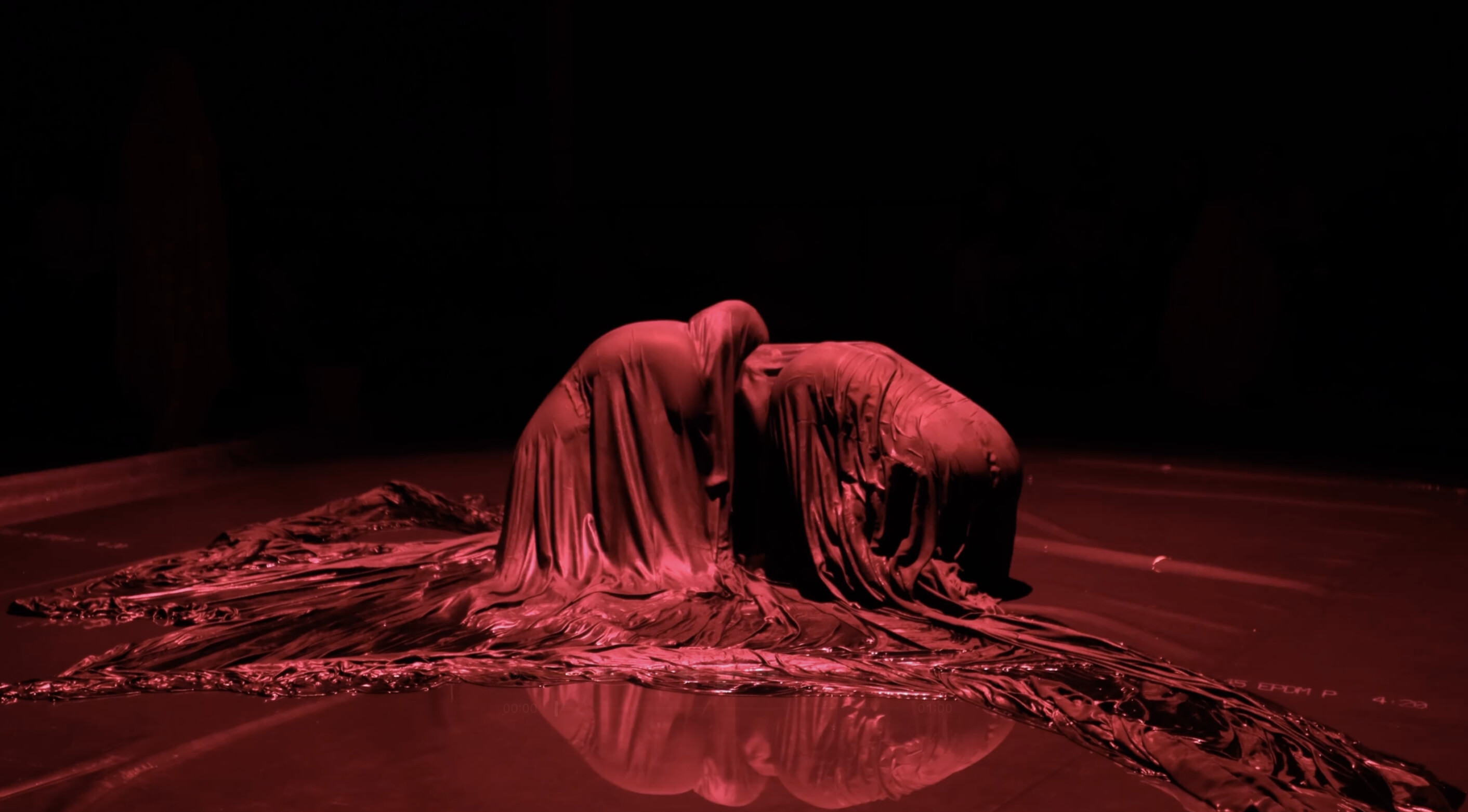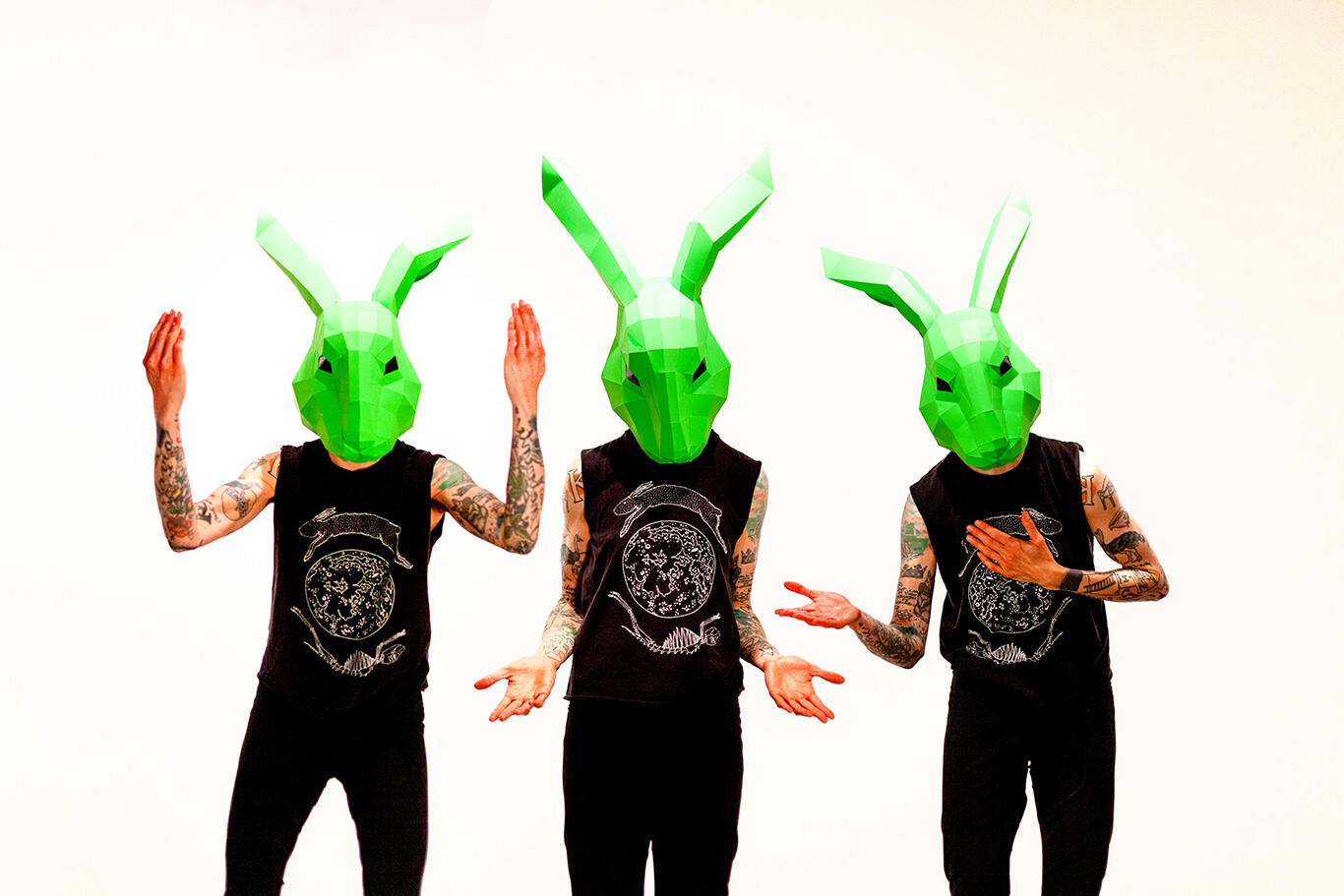Pleasure, Power, Disobedience, and Ritual
An executive director reminds us why performance matters now more than ever
Pleasure, Power, Disobedience, and Ritual
An executive director reminds us why performance matters now more than ever

Whoa, it's really dark. Like REALLY dark.
I can’t see anything.
Don’t panic. Trust. This is your theater; you of all people know what to expect. Breathe and dig it, babe.
Those were my thoughts as I entered On the Boards during last year’s production of Andrew Schneider’s NOWISWHENWEARE. The show is affectionately referred to as “The Stars” by OtB staff, as it takes place in a pitch-black room with over 4,000 individually controlled pinpoints of light. When the little lights turn on, it’s a magnificent visual riot. As the show continues, it also unfolds a personal narrative of intense grief. How can such polarities exist together in one room? Exquisitely, it turns out.
I arrived in Seattle two years ago to take the job of executive director of On the Boards. Prior to that, I’d spent 19 years in the Bay Area working at the San Francisco Museum of Modern Art, where I eventually became chief officer of education and community engagement, overseeing a wide and wild number of programs. Public programs, and especially performance, were my true loves. During this time, I had the privilege of working with thousands of contemporary artists. I did things like source a food-grade conveyor belt for a futurist banquet, design performance spaces with Snøhetta architects for the museum’s building expansion, and figure out how to safely get performers 30 feet up off the ground on lobby scaffolding.
I’ve never been an artist. I’ve always been a facilitator, creating structures and platforms for artists. Contemporary performance has a great ability to set institutions and people free from their rigidity. For the past two decades, I have been positioned at a fulcrum, fighting against the naturally occurring rigidity of institutions in favor of the impossibly flexible imaginations of artists.
While I admired OtB from afar long before I got here, it wasn’t until I set foot in Seattle that I truly understood just how damn unique this theater is—not just to Seattle, but to the country and the world. In my first year at OtB, I met with more than 200 artists, community members, and patrons. I was on a mission to understand what people needed and wanted. I met with civic leaders, funders, people who had been coming to OtB for over 40 years, subscribers, professors, other arts leaders, and, best of all, artists. Artists like Pat Graney. The Pat Graney. The meeting where I showed up at Macrina Bakery, lightly sweating all over out of nervousness, and was quickly charmed by her chaos and sweetness. In my year of meetings, I encountered the same thing from everyone I met: a generosity, an urgency, a radical puckishness, and most of all, a longing for the Northwest New Works festival to return.
Northwest New Works—the BELOVED NWNW—was born at OtB in 1983. At its core, it is an incubator, a chance for artists to apply with a new idea, and, if selected, spend a number of months experimenting, rehearsing, and developing material for the stage. The festival has helped numerous artists build a practice, and at times, it has served as a pipeline to develop evening-length works for the mainstage. The list of local artists who have participated is robust: Degenerate Art Ensemble, zoe | juniper, Wade Madsen, Waxie Moon, Amy O’Neal, Peggy Piacenza, Cherdonna Shinatra, Kultur Shock, Molly Sides, dani tirrell, Fox Whitney, and Keyes Wiley, to name a few. The program shuttered after 2019, leaving a hole in the community. After a five-year hiatus, NWNW is coming back to On the Boards. And what a time to bring back an experimental festival, y’all!
I write this in the midst of turmoil at the federal level. In recent months, the NEA federal arts funding introduced the proposition that competitive proposals should celebrate the nation’s semiquincentennial, along with bizarre “assurance of compliance” forms to adhere to the president’s recent executive orders against promoting DEI or “gender ideology” (whatever that means). Similar threats to federal IMLS and NEH programs that fund art and culture projects across the U.S. are also arising. It’s all so chaotic, and it would be laughable if it weren’t so harmful to so many folks, particularly to those who are already marginalized.
It’s also the case that major private foundations are narrowing their funding criteria. Major arts funders are moving away from supporting national structures like MAP Fund, National Performance Network (NPN), and National Dance Project (NDP), all three of which have very open parameters and fund any number of expansive ideas from artists working in performance. Much of this is well-intentioned: Funders are focused on giving artists access to new technology and on supporting artists who are working directly with themes of injustice or live in rural areas with less access to arts resources. This will do some good to some artists. Many thrive within these criteria and will benefit from such focused support, but far too many others will be left behind as a result.
Which raises questions that must be asked of institutions of every size and type—questions that I, as an executive director, must ask of myself in times like these. When does rigor become rigid? When do funding structures or powerful people edge over into influencing what artists are allowed to create? What happens when artists are relegated to being makers of prescribed content, rather than by their own curiosity and idiosyncrasy?

+++
I admit, I have an allergic reaction to the question of art's usefulness, as if artistic value arises from use cases. What I will say is that artists have consistently made me think about the world differently and ask better questions. As rules tighten and sameness gets reinforced by algorithms, artists remind us what’s real, what’s possible, and what still needs to change. It is artwork that has catapulted me into surreal realms and simultaneously grounded me in what matters. And performance does that live, in real time.
This is the thinking and context behind why I brought back NWNW and why it’s important right here and right now.
In bringing back the festival this year, OtB has made some mission-driven changes to support regional artists even harder. Thanks to generous support by the Raynier Foundation, John C. Robinson, and Norie Sato & Ralph Berry, we’ve quadrupled the artist stipend and provided rehearsal and tech time as well as professional development with the OtB team. We’ve also introduced a swoon-worthy local curatorial panel—Kemi Adeyemi, Roya Amirsoleymani, and Fox Whitney—who selected eight finalists from an open call that brought in over 80 applications, representing 220 artists from Washington, Oregon, and British Columbia.
Something special about NWNW is that it has no burdensome thematic criteria—to be eligible, works merely need to be live, new, and made by artists who are located geographically nearby. That’s not to say that themes don’t emerge organically as things coalesce. The festival this year dives headfirst into pleasure and its powers of resistance, live acts of disobedience, and communal rituals of care. I think there’s something inherent to the ideas that these artists are investigating that resonates with our larger context: immigration, belonging, interpersonal relationships, technology, grappling with the past, imagining the future, playing with technological tools in unexpected ways, and the absurdity of it all….
“What the fuck did I just see?”
“I cried in the dark!”
“My mind is blown.”
I’ll never tire of hearing the words like these, spoken by audience members as they filter out into the lobby after a show. Theater is a perfect place to journey into the unknown: experience risk, humanity, and maybe even a Lynchian dreamworld of expanded consciousness and unexpected irreverence. I, for one, want to live in a world that is both beautiful and a little weird, and NWNW allows artists the platform to make work that does just that. I look forward to sitting in the dark together and experiencing art.

+++
Northwest New Works, June 12–14 at On the Boards, $1–36, ontheboards.org.
Megan Kiskaddon (she/her) is the executive director of On the Boards. She is a Seattle Arts Commissioner and serves as a National Dance Project advisor. Previously, she led the Education and Community Engagement division at SFMOMA. She lives in Queen Anne with her sociologist spouse and redheaded kiddo.